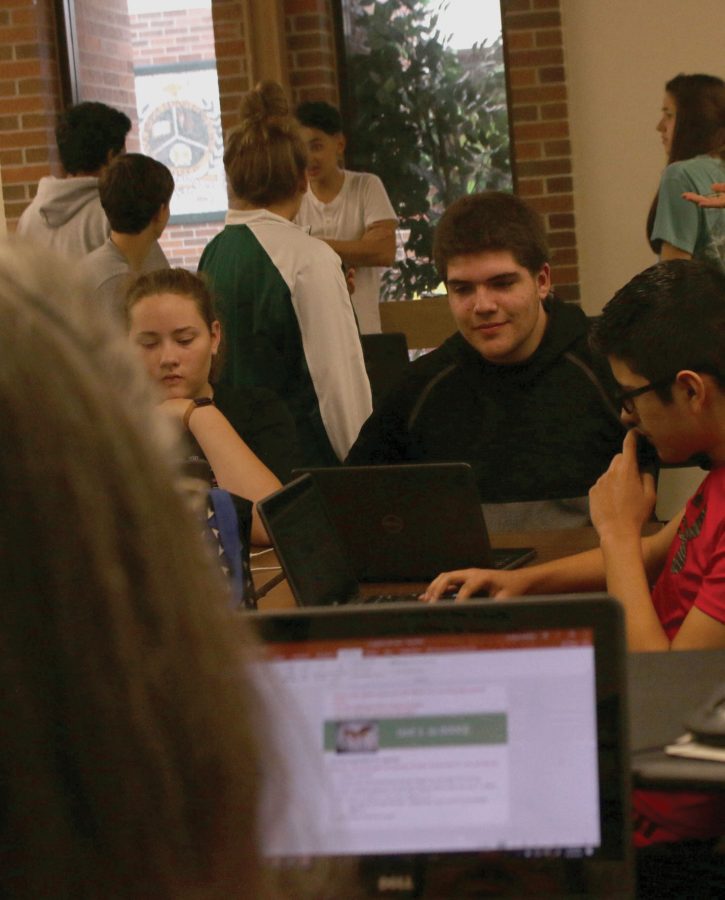During the summer the College Board anounced plans to refashion the structure of Advanced Placement (AP) World History. The change, scheduled for the 2019-20 school year, intends to split the curriculum of AP World History in half. Instead of teaching from the Paleolithic Era to present day, two separate courses would divide up the eras into two separate courses. The classes would split into World History: AP World History: Ancient (ending at 1200 CE) and AP World History: Modern (beginning at 1200 CE).
While AP World: Modern is confirmed, the College Board still needs approval to create AP World: Ancient, an additional course. the class requires 15 percent of all high schools that offer AP classes to confirm interest in offering the new course, and 15 percent equates to about 2,500 high schools, according to the College Board. Additionally, 100 colleges must indicate to the College Board a specific credit they would give high school students who sufficiently score well on the end of the year AP test in AP World: Ancient.
Applications for interested high schools and colleges opened Sept. 1, and College Board will update the affirmative count on its website quarterly.
The College Board justified the amendments in a statement on its website saying, “a majority of AP World History teachers have told us that they were teaching too little about too much. Students’ essay scores on the end-of-year AP Exam have reflected that overwhelming challenge.”
RBHS AP World History teacher David Graham, however, disapproves of the proposed changes in fear the new curriculum will be too European centric.
“I didn’t think it was warranted, nor did I think the decision that they made on when to make the cut off was in the spirit of what AP World was originally intended to do,” Graham said. “The original intent of AP was to place the west in the context of the larger world. . . In other words they didn’t want it to be western centric. They wanted it to be about the west as part of the larger process of civilization around the world during this time.”
Sophomore AP World student Kierra Pilot said she would take both AP World classes but doesn’t prefer the split. Currently Pilot is learning about the first civilizations, which under the College Board’s decision, would be taught in AP World History: Ancient.
“I think the changing of the AP curriculum is illogical because the students aren’t getting the full experience of AP World,” Pilot said. “Starting in the 1200s would not make sense because it’s completely skipping over an important aspect of human life.”
Junior Savannah Cunneen, who took AP World History last year, supports the scheduled changes to prevent rushed instruction as well as provide a more in depth study of world history. Cunneen said she felt the last couple of periods covered in her AP World History class were hurried and skipped interesting parts of history.
“Yeah, I think that will be helpful; there’s always more you can learn about a period in time,” Cunneen said. “. . .[It] would have been cool to get a little more time to have a better understanding before the test since it is such a long period of time.”
The College Board furthers its reasoning by stating universities cover world history over multiple courses. AP classes are supposed to model college courses for college credits, the reason a change in curriculum is validated. The Board also said student essay scores on the end-of-year AP exam reflected educators’ concerns of a surface level study.
“Personally, I felt very overwhelmed while studying for the test, but I just think [the change is a bit ineffective]” Cunneen said, “because the piece they cut out wasn’t a huge percentage of the content that was asked on the test.”
According to the College Board’s student score distribution, a majority of students (56.2 percent) who took the AP World History exam received a score of three, four or five on the exam. Graham doesn’t think the College Board’s concern about poor AP test scores applies to RBHS and believes his students, on average, are hitting the marks.
“When 86 to 90 percent of your students get a three, a four or a five on the test, depending on the year. The majority of our kids got fours or fives,” Graham said. “AP World [History] at RBHS has an incredible track record versus the rest of the country in preparing kids in what the AP World [History] curriculum was intended to do, which is to get them ready for college at that level.”
LATEST NEWS
- Bruins Baseball ranks second in the state, April 20
- Stress, anxiety skyrocket as students prepare for upcoming AP tests
- RBHS holds successful night of percussion
- Not even water?
- Solar eclipse to pass through Missouri, April 8
- How CPS is organized: a guide
- City of Columbia to hold school board election April 2
- Youth Election Participants to assist in upcoming municipal election
- City of Columbia hosts first Community Engagement Session for McKinney Building, hopes to gain public insight on the structure’s future
- RBHS Track Team Opener at Battle Gallery





















































































